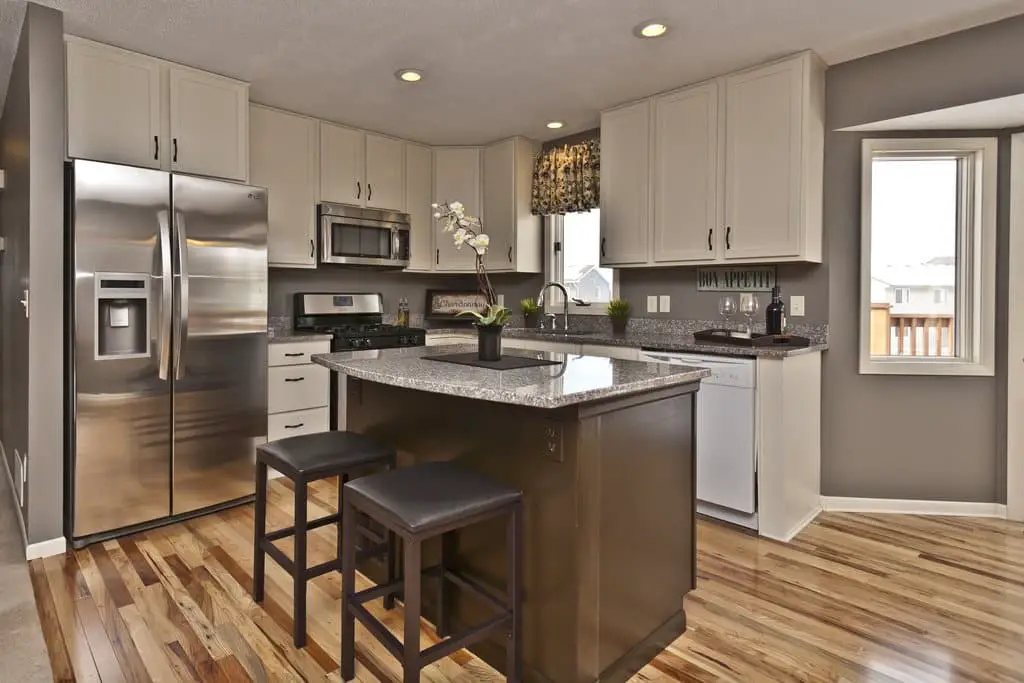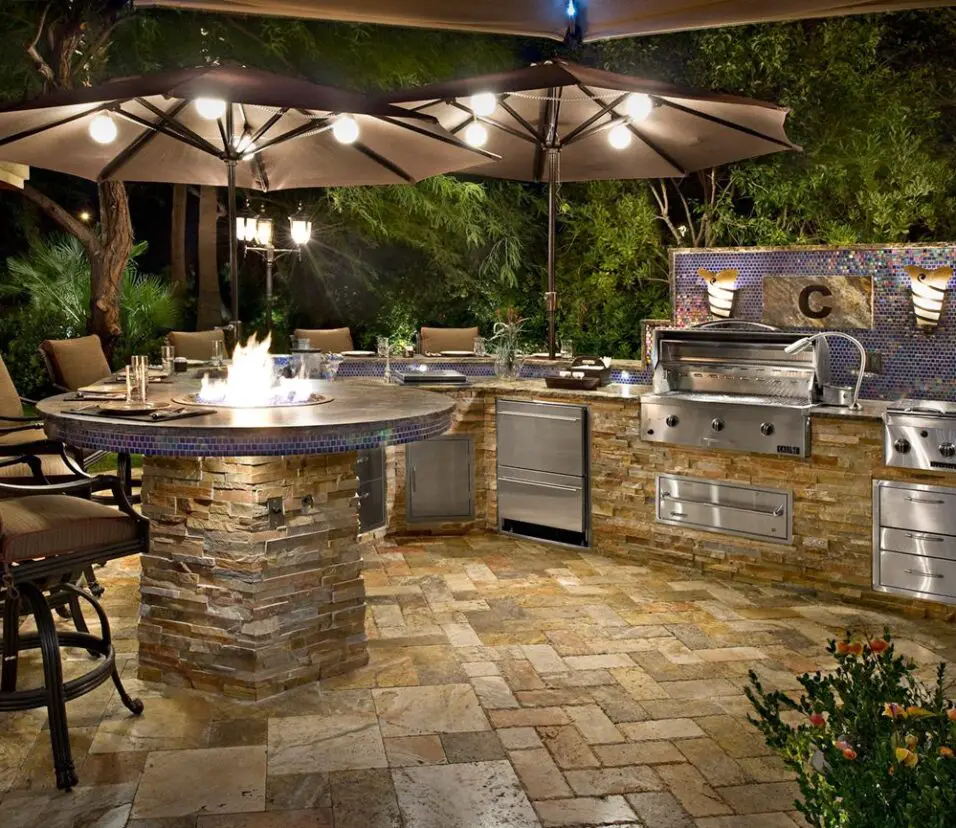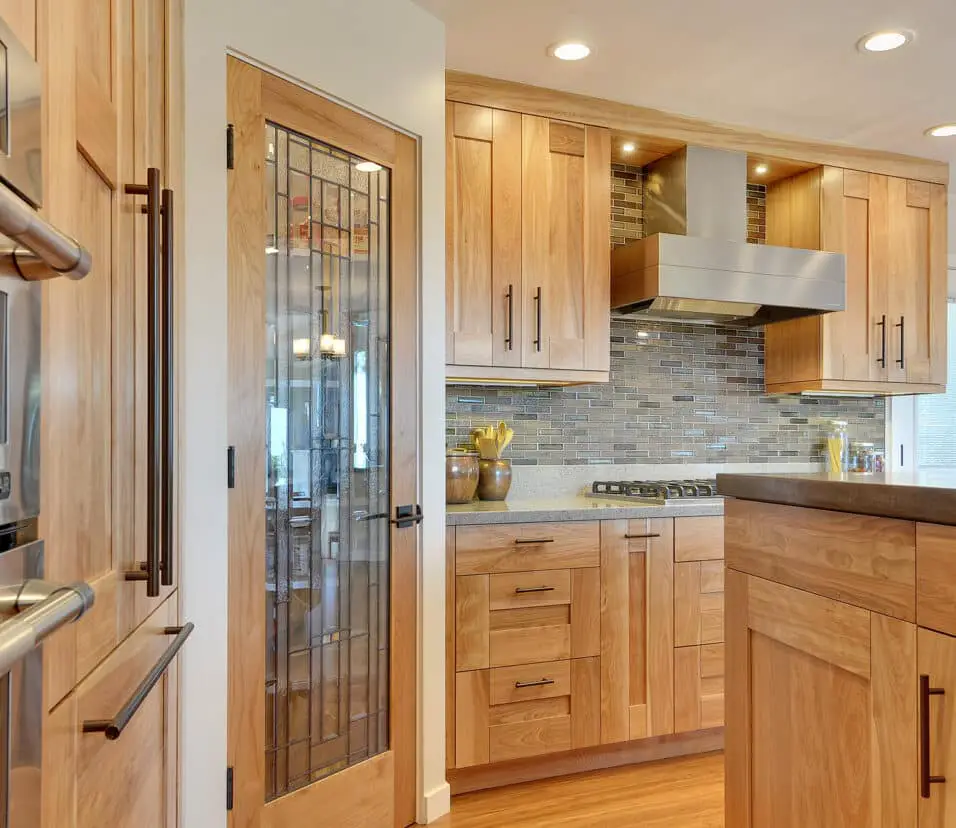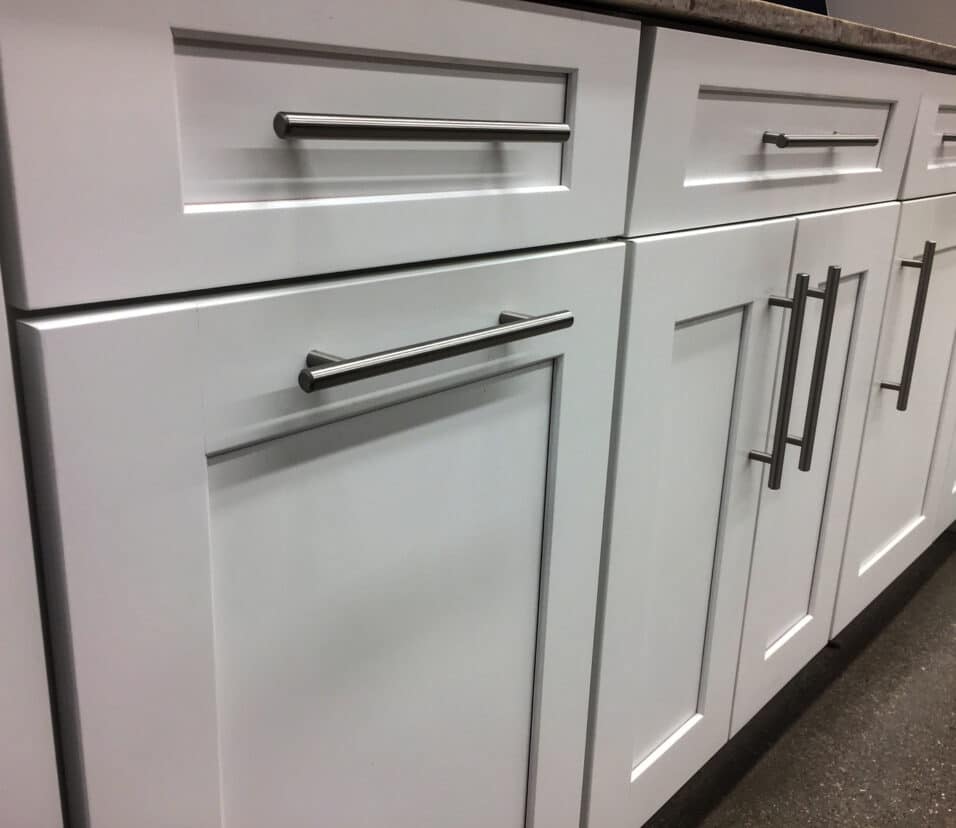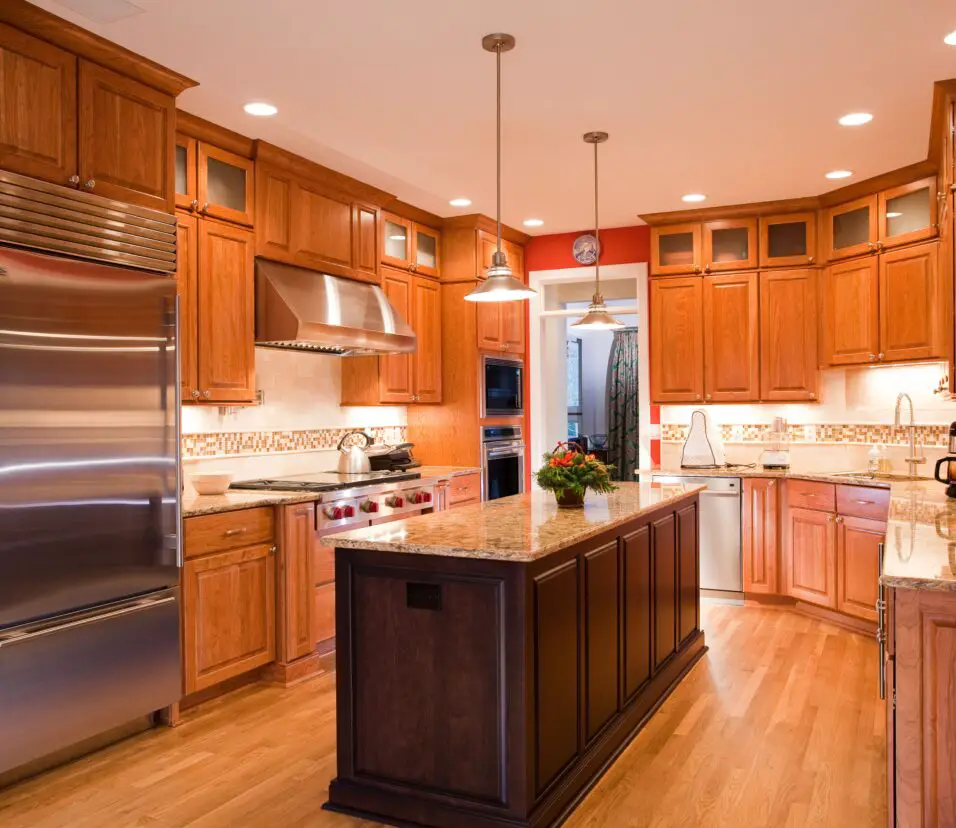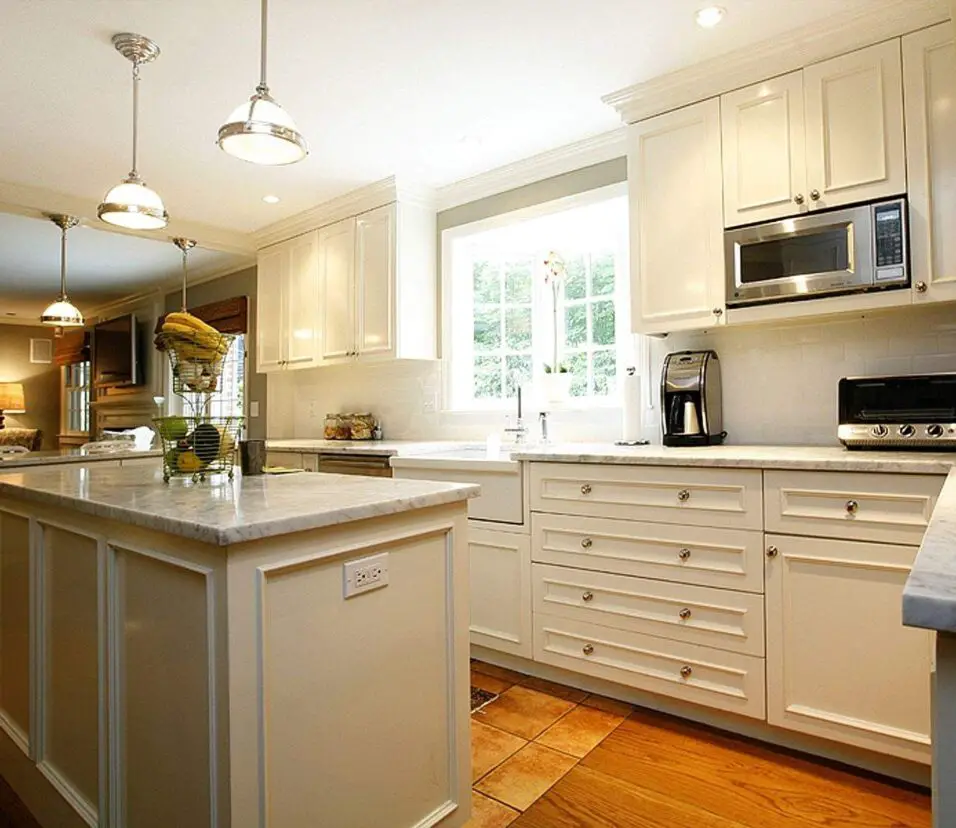How To Design Au Shaped Kitchen
Introduction
How To Design Au Shaped Kitchen: Designing a kitchen is an exciting and important task for any homeowner. One popular kitchen layout that offers both functionality and style is the U-shaped kitchen. This design maximizes the available space and provides ample storage and countertop areas, making it a practical choice for both small and large kitchens.
This design creates a natural workflow, as everything is within easy reach. The U-shaped kitchen is ideal for those who love to cook and entertain, as it allows for efficient movement between different work zones.
In addition to its functionality, the U-shaped kitchen cabinet design also offers aesthetic appeal. The symmetrical layout creates a sense of balance and harmony in the space. It allows for the integration of various design elements, such as a statement backsplash or a stylish range hood, to enhance the overall look of the kitchen. The U-shaped kitchen can be customized to suit any style, whether you prefer a modern, minimalist look or a traditional, cozy feel.
U-shaped kitchen cabinet
One of the key advantages of a U-shaped kitchen is its ability to maximize storage space. With three walls of cabinetry, there are plenty of upper and lower cabinets, as well as drawers, to store all your kitchen essentials. This design also allows for the incorporation of a kitchen island, which can provide additional storage and countertop space. Whether you need a place to store your pots and pans or display your collection of cookbooks, the U-shaped kitchen offers ample storage options.
The U-shaped kitchen design is a versatile and practical choice for homeowners looking to create a functional and stylish kitchen. With its efficient workflow, ample storage options, and aesthetic appeal, it is no wonder that the U-shaped kitchen is a popular choice among homeowners. Whether you have a small or large kitchen space, consider incorporating the U-shaped layout to optimize your cooking and entertaining experience.

How do you layout an U-shaped kitchen?
A U-shaped kitchen is a common layout that features built-in cabinetry, countertops and appliances on three sides, with a fourth side left open or featuring a cased opening or entry door. In larger spaces with enough width, U-shaped kitchens are often outfitted with a freestanding island or seating.
Introduction:
An U-shaped kitchen layout is a popular choice for many homeowners due to its efficient and functional design. This type of kitchen layout maximizes the available space and provides ample storage and countertop areas. If you are considering designing an U-shaped kitchen, there are several key factors to keep in mind to ensure a successful layout.
Benefits of U-shaped kitchen layout:
One of the main advantages of an U-shaped kitchen layout is its ability to provide a great amount of storage and countertop space. With cabinets and appliances placed along three walls, you have plenty of room to store your kitchen essentials and prepare meals. This layout also allows for easy access to all areas of the kitchen, making it convenient and efficient to work in.
Design considerations:
When planning the layout of your U-shaped kitchen, it is important to consider the work triangle concept. The work triangle consists of the three main areas in the kitchen: the sink, the refrigerator, and the stove. These three areas should be positioned in a way that allows for easy movement and efficient workflow. Placing them too far apart can result in unnecessary steps and wasted time.
Optimizing space:
To make the most of your U-shaped kitchen layout, it is essential to optimize the available space. Utilize the corners by installing corner cabinets or lazy susans to maximize storage. Consider using overhead cabinets that reach the ceiling to take advantage of vertical space. Additionally, incorporating a kitchen island in the center of the U-shape can provide additional storage and countertop space.
An U-shaped kitchen layout offers numerous benefits in terms of storage, countertop space, and efficient workflow. By carefully considering the design and optimizing the available space, you can create a functional and visually appealing kitchen that meets your needs and preferences.
What is the best size for a U-shaped kitchen?
U-Shape Kitchens have widths that range from 9′-12′ (2.7-3.7 m) and depths that vary as desired. U-Shape Kitchens should be planned with an overall area of roughly 107 ft2 (10 m2).
Introduction:
A U-shaped kitchen is a popular layout choice for many homeowners due to its efficient design and ample storage space. When it comes to determining the best size for a U-shaped kitchen, several factors need to be considered, including the available space, functionality, and personal preferences. By carefully planning the dimensions of a U-shaped kitchen, you can create a functional and visually appealing space that meets your needs.
Factors to consider:
One of the primary considerations when determining the size of a U-shaped kitchen is the available space. The dimensions of the kitchen area will dictate how large or small the U-shaped layout can be. It is essential to measure the length and width of the space accurately to ensure that the kitchen layout fits seamlessly within the room.
Functionality:
The size of a U-shaped kitchen should also be determined by its functionality. Consider how you plan to use the kitchen and the appliances and fixtures you wish to incorporate. If you enjoy cooking and require ample counter space, a larger U-shaped kitchen may be more suitable. On the other hand, if you have a smaller space or prefer a more compact layout, a smaller U-shaped kitchen can still provide functionality while optimizing the available area.
Efficient workflow:
Another crucial aspect to consider when determining the size of a U-shaped kitchen is the workflow. The distance between the three arms of the U-shape should be carefully planned to ensure a smooth and efficient workflow. Ideally, there should be enough space between the countertops and appliances to allow for easy movement and access to different areas of the kitchen.
Personal preferences:
Lastly, personal preferences play a significant role in determining the best size for a U-shaped kitchen. Some individuals may prefer a more spacious kitchen with plenty of room for socializing and entertaining, while others may prioritize maximizing storage space and functionality. It is essential to consider your lifestyle, cooking habits, and aesthetic preferences when deciding on the size of your U-shaped kitchen.
Where should the fridge be in a U-shaped kitchen?
With a U-shaped kitchen you can create an excellent work triangle by placing your fridge, oven, and sink on their own side of the U. If possible, palace your refrigerator and sinks on the tips of your U so they don’t disrupt your counter space.
Introduction:
In a U-shaped kitchen, the placement of the fridge is an important consideration for both functionality and aesthetics. The U-shaped kitchen layout is characterized by three walls of cabinetry forming a U-shape, providing ample storage and countertop space. The fridge placement should be carefully planned to ensure easy access, efficient workflow, and a visually pleasing design.
Functionality:
When determining the ideal location for the fridge in a U-shaped kitchen, it is crucial to consider functionality. The fridge should be easily accessible from all areas of the kitchen, including the cooking and prep zones. Placing the fridge near the entrance of the kitchen or at the end of one of the U-shaped walls ensures convenient access for both the cook and other family members. This placement allows for quick retrieval of ingredients and easy storage of groceries, minimizing the distance traveled between the fridge and other work areas.
Workflow:
The placement of the fridge in a U-shaped kitchen should also optimize the workflow. Ideally, the fridge should be positioned in close proximity to the sink and the cooking area. This arrangement creates a functional work triangle, with the fridge, sink, and stove forming the three points. This triangular layout minimizes unnecessary movement and maximizes efficiency during meal preparation. Placing the fridge near the sink allows for easy access to water and ice, while its proximity to the cooking area ensures quick retrieval of ingredients and leftovers.
Aesthetics:
In addition to functionality and workflow, the placement of the fridge in a U-shaped kitchen should also enhance the overall aesthetics of the space. The fridge should be integrated seamlessly into the cabinetry design, either by using matching panels or by selecting a fridge with a finish that complements the kitchen’s style. Placing the fridge at the end of one of the U-shaped walls, with cabinetry surrounding it, creates a cohesive and visually appealing look. This placement also prevents the fridge from interrupting the flow of the kitchen and allows it to blend in with the surrounding elements.
The fridge in a U-shaped kitchen should be strategically placed to ensure functionality, optimize workflow, and enhance the overall aesthetics of the space. By considering these factors, homeowners can create a well-designed and efficient kitchen layout that meets their needs and preferences.
How to design an odd shaped kitchen?
10 ways to make the most of an awkward kitchen layout
- Prioritize a kitchen with a view.
- Think about your personal workflow.
- Plan for a multi-purpose space.
- Don’t forget about foot traffic.
- Consider adding additional space around the island.
- Think about vertical storage for particularly small spaces.
Introduction:
Designing an odd-shaped kitchen can be a challenging task, as it requires careful planning and creative solutions to make the most of the available space. Whether you have a kitchen with an irregular layout or unique architectural features, there are several strategies you can employ to create a functional and visually appealing design. In this article, we will explore some key considerations and tips for designing an odd-shaped kitchen.
Utilizing the Space:
When working with an odd-shaped kitchen, it is essential to maximize the use of every available inch. Start by carefully analyzing the layout and identifying any potential obstacles or limitations. This could include uneven walls, angled corners, or protruding architectural elements. By understanding these challenges, you can develop a design plan that optimizes the available space.
Creating Functional Zones:
One effective approach for designing an odd-shaped kitchen is to create distinct functional zones. This involves grouping similar activities together to ensure a smooth workflow. For example, you can designate one area for food preparation, another for cooking, and a separate space for cleaning. By organizing your kitchen in this way, you can make the most of the available space and ensure that each zone is easily accessible and efficient.
Custom Cabinetry and Storage Solutions:
Odd-shaped kitchens often require custom cabinetry and storage solutions to maximize functionality. Consider working with a professional kitchen designer who can create custom-built cabinets that fit seamlessly into the unique layout. This will help you make the most of every nook and cranny, ensuring that there is ample storage space for all your kitchen essentials. Additionally, incorporating clever storage solutions such as pull-out shelves, corner cabinets, and vertical storage can further optimize the use of space.
Lighting and Color:
Proper lighting and color choices can play a significant role in enhancing the design of an odd-shaped kitchen. Adequate lighting is crucial to ensure that all areas of the kitchen are well-lit and functional. Consider a combination of ambient, task, and accent lighting to create a balanced and inviting atmosphere. When it comes to color, opt for lighter shades to make the space appear larger and more open. Light-colored cabinets, countertops, and walls can help create a sense of continuity and cohesion in an odd-shaped kitchen.
What are the 5 shapes of kitchens?
There are five basic kitchen layouts: L-Shape, G-Shape, U-Shape, One-Wall and Galley. The size and shape of the room will typically determine your layout. Although variations and deviations do exist, most kitchen layouts are based on one of the following shapes.
Introduction:
A kitchen is an essential part of any home, serving as a space for cooking, dining, and socializing. When it comes to kitchen design, there are various shapes that can be utilized to optimize functionality and aesthetics. In this article, we will explore the five common shapes of kitchens and discuss their unique features and advantages.
Paragraph 1:
The first shape we will discuss is the galley kitchen. This type of kitchen is characterized by two parallel countertops or cabinets, creating a narrow walkway in between. Galley kitchens are ideal for small spaces or apartments, as they maximize efficiency by utilizing every inch of available space. The layout allows for easy movement between the cooking and preparation areas, making it suitable for one or two cooks. Additionally, galley kitchens often have ample storage options, with cabinets and shelves lining both walls.
Paragraph 2:
Next, we have the U-shaped kitchen. As the name suggests, this layout forms a U shape, with cabinets and countertops surrounding three walls. The U-shaped kitchen provides plenty of storage and workspace, making it a popular choice for larger families or those who enjoy cooking and baking. This design allows for efficient workflow, as everything is within easy reach. It also offers the possibility of adding an island in the center, providing additional storage and seating options.
Paragraph 3:
The L-shaped kitchen is another common layout, featuring countertops and cabinets along two adjacent walls, forming an L shape. This design is versatile and works well in both small and large kitchens. The L-shaped kitchen provides ample counter space and storage, while also allowing for an open layout, making it ideal for entertaining guests. It offers flexibility in terms of adding an island or dining table, depending on the available space and personal preferences.
Paragraph 4:
Another popular kitchen shape is the island kitchen. This layout typically includes a central island that serves as an additional workspace, storage area, and sometimes a dining or seating area. Island kitchens are perfect for larger spaces, as they provide extra counter space and create a focal point in the room. They also encourage social interaction, as the island can be used for casual dining or as a gathering spot during parties or family gatherings.
Paragraph 5:
Lastly, we have the peninsula kitchen. Similar to the island kitchen, the peninsula layout includes a connected countertop or cabinet that extends from one of the walls, creating an L or U shape. This design offers the benefits of an island kitchen while saving space. The peninsula can serve as a breakfast bar or additional workspace, and it also helps to define the kitchen area in an open floor plan. Peninsula kitchens are versatile and can be customized to suit individual needs and preferences.
Overall, the five shapes of kitchens mentioned above – galley, U-shaped, L-shaped, island, and peninsula – each have their own advantages and can be tailored to fit various spaces and lifestyles. By considering the available space, desired functionality, and personal preferences, homeowners can choose the most suitable kitchen shape to create a functional and visually appealing space.
When designing an “”U”” shaped kitchen layout, there are several key considerations to keep in mind. Firstly, it is important to ensure that the distance between the three arms of the “”U”” is not too wide, as this can make it difficult to reach different areas of the kitchen efficiently. Ideally, the distance between the arms should be no more than 8 feet, allowing for easy movement and accessibility. Another important consideration is the placement of appliances and workstations within the layout.
Additionally, storage space is a crucial consideration in any kitchen design. In a “”U”” shaped layout, it is important to maximize storage by utilizing the corners effectively. Installing corner cabinets or utilizing pull-out shelves can help make the most of these often underutilized spaces.
How does the “”U”” shaped kitchen design optimize space and functionality?
The “”U”” shaped kitchen design is known for its ability to optimize space and functionality in a kitchen. This layout consists of cabinets and appliances arranged in a U shape, with three walls forming the perimeter of the kitchen. One of the key advantages of this design is the efficient use of space. By utilizing three walls, it maximizes the available area and provides ample storage and countertop space.
The “”U”” shaped layout also enhances functionality by creating a well-organized work triangle. The work triangle refers to the efficient flow between the three main kitchen areas: the sink, the stove, and the refrigerator.
Furthermore, the “”U”” shaped kitchen design offers versatility in terms of customization and personalization. Whether it’s adding an island in the center for additional workspace or incorporating a dining area within the U shape, this layout provides flexibility to create a kitchen that meets both aesthetic and functional requirements.
What are some common challenges or limitations associated with designing an “”U”” shaped kitchen?
Designing a “”U”” shaped kitchen layout can offer numerous benefits, such as maximizing space and functionality. However, it is important to be aware of the common challenges and limitations that may arise during the design process. One of the main challenges is the limited amount of wall space available for cabinets and appliances. The “”U”” shape often requires three walls, which can make it difficult to accommodate all the necessary elements without overcrowding the space.
Another challenge is the potential for a cramped work triangle. The work triangle refers to the efficient flow between the sink, stove, and refrigerator, which are the three most frequently used areas in the kitchen. In a “”U”” shaped kitchen, if the distance between these elements is too small, it can hinder movement and make cooking and meal preparation less efficient.
Additionally, storage can be a limitation in “”U”” shaped kitchens. The corners of the “”U”” shape can be difficult to access and utilize effectively. However, incorporating corner storage solutions, such as lazy susans or pull-out shelves, can help maximize the available space and overcome this limitation.
What are the recommended dimensions or measurements for an ideal “”U”” shaped kitchen layout?
When it comes to designing an ideal “”U”” shaped kitchen layout, there are some recommended dimensions and measurements that can help optimize the functionality and efficiency of the space. These dimensions can vary depending on the size of the kitchen and the specific needs of the homeowner, but there are some general guidelines to consider.
This allows for enough space to comfortably accommodate appliances, cabinets, and countertops. The total width of the kitchen should ideally be between 16 to 26 feet, which provides ample room for movement and work areas.
Additionally, the depth of the “”U”” shape should be around 12 to 18 feet. This depth allows for easy access to all areas of the kitchen and ensures that the workspace is not too cramped. It is important to leave enough space between the arms of the “”U”” shape to allow for smooth traffic flow and to avoid any feeling of overcrowding.
Can you provide examples or inspiration for different styles and variations of “”U”” shaped kitchen designs?
When it comes to “”U”” shaped kitchen designs, there are numerous styles and variations that can be explored to suit different preferences and needs. Here are a few examples to inspire your kitchen design:
1. Traditional “”U”” Shaped Kitchen: This style typically features a symmetrical layout with cabinets and appliances on three walls, forming a U shape. It often incorporates classic elements such as ornate cabinetry, decorative moldings, and a timeless color palette. This design offers ample storage space and a functional work triangle, making it a popular choice for traditional homes.
2. Modern Minimalist “”U”” Shaped Kitchen: This style embraces simplicity and clean lines, focusing on functionality and efficiency. It often features sleek, handle-less cabinets, minimalist hardware, and a monochromatic color scheme. The use of high-quality materials like stainless steel and quartz countertops adds a touch of sophistication to the space. This design is perfect for those who prefer a contemporary and clutter-free kitchen.
3. Rustic Farmhouse “”U”” Shaped Kitchen: This style exudes warmth and charm, incorporating elements inspired by the countryside. It often includes distressed wood cabinets, open shelving, and vintage-inspired fixtures. Natural materials like stone or wood countertops and farmhouse sinks add to the rustic appeal. This design creates a cozy and inviting atmosphere, perfect for those who appreciate a touch of nostalgia in their kitchen.
These are just a few examples of the many styles and variations you can consider for your “”U”” shaped kitchen design. Remember to personalize your space by incorporating your own unique touches and preferences to create a kitchen that not only looks beautiful but also functions efficiently for your everyday needs.

Conclusion
After thoroughly researching and analyzing the topic of designing a U-shaped kitchen, it is evident that this layout offers numerous advantages and is a popular choice among homeowners. The U-shaped kitchen design maximizes efficiency and functionality by providing ample countertop space, storage options, and a well-organized work triangle. This layout is particularly suitable for medium to large-sized kitchens, as it allows for easy movement and accommodates multiple cooks simultaneously.
Another advantage of a U-shaped kitchen layout is its efficient workflow. The design creates a natural work triangle between the sink, stove, and refrigerator, minimizing the distance between these essential elements. This triangular arrangement allows for smooth movement and easy access to all areas of the kitchen, reducing the time and effort required for meal preparation. Furthermore, the U-shaped layout provides ample countertop space on all three sides, offering plenty of room for food preparation, cooking, and serving.
Designing a U-shaped kitchen is a smart choice for homeowners looking to maximize functionality and efficiency in their kitchen space. The layout’s ability to optimize storage, create an efficient workflow, and provide ample countertop space makes it an ideal option for medium to large-sized kitchens. Whether you are a passionate home cook or simply enjoy spending time in the kitchen, a U-shaped kitchen design will undoubtedly enhance your culinary experience and make your daily cooking tasks more enjoyable and convenient.



